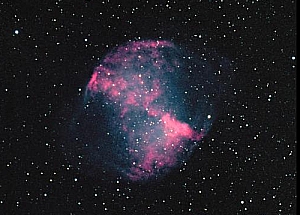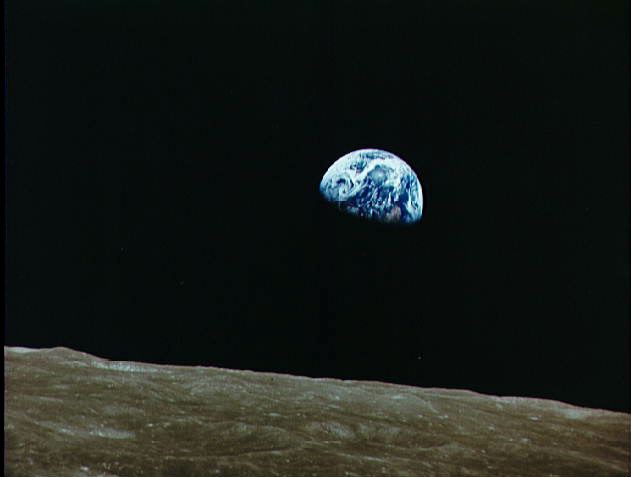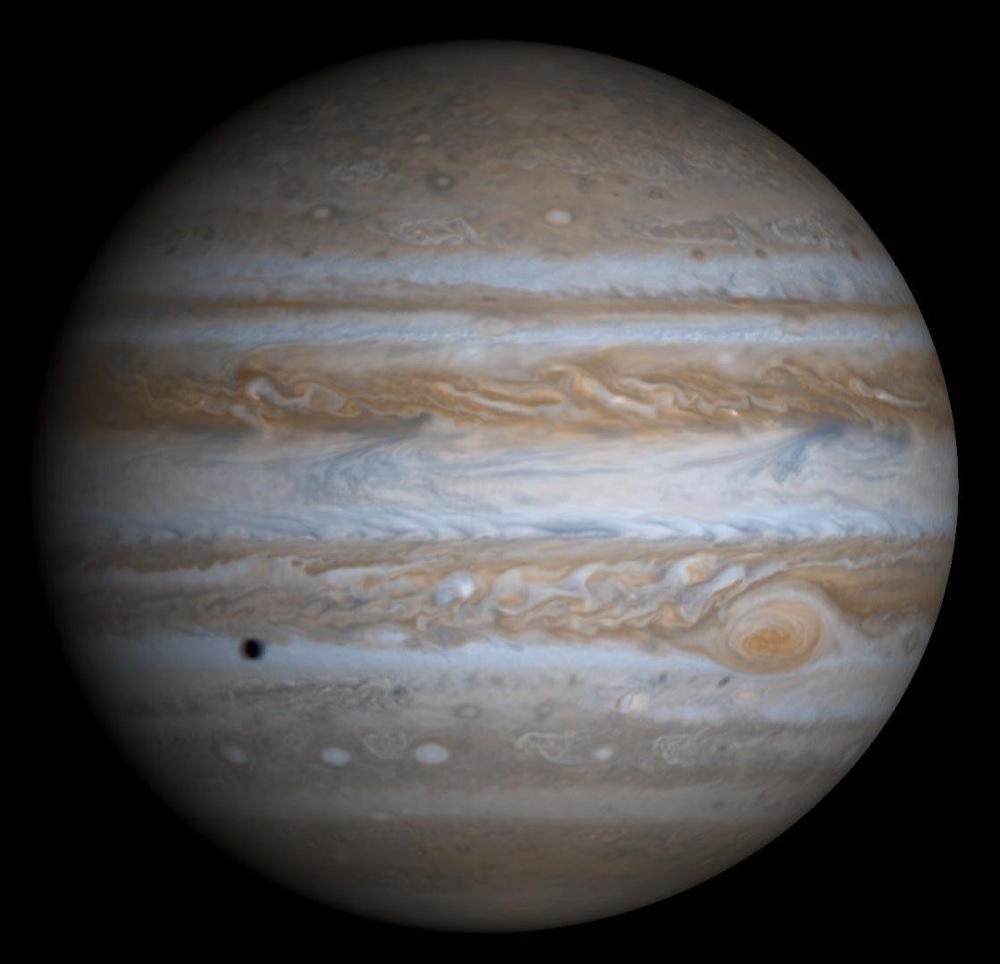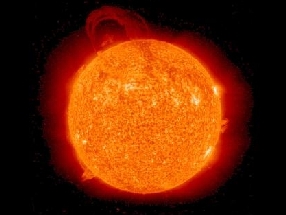Astronomy provides a fascinating and even downright astonishing view of the universe. I have previously written on unusual or unexpected aspects of astronomy, and you can find links to those previous articles at the end of this one. This time I offer 10 more oddities and misconceptions that you may or may not have heard before.

1) Planetary Nebulae have nothing to do with planets
When you see a spectacular telescope image of M27 (Messier 27) it is not hard to see a resemblance to the Earth. In a telescope, some of these objects appear as faint, fuzzy greenish disks, resembling the planet Uranus. The resemblance is what prompted the 18th Century astronomer William Herschel to dub them “planetary nebulae.” The term “nebula” (“nebulae,” plural) is a Latin word for a cloud, a term applied to many dim, often ill-defined objects seen in early telescopes. M27 was the first that Herschel discovered, but due to its odd, two-lobbed appearance to the human eye in a telescope, he called it the “Dumbbell” nebula. In fact these objects have nothing to do with planets, but are the expanding clouds of gas and debris left over at the death of a sun-like star. They are vastly larger than any planet or star, averaging a light year or more across.

2) Earth is not round
Earth is not round. Nor, for that matter, is it flat, rectangular, pyramidal, cubical or in the shape of any regular solid. Normally we think of it as being spherical, but that is really only a first impression. Of course the surface of the solid body of the planet has many variations, from tall mountain ranges to deep ocean trenches. But even if those variations are ignored, there are other variations. Some satellite data, for example, indicate a possible depression near the South Pole and a corresponding bulge near the North Pole. The most well known deviation, however, was theorized two centuries ago. It says that the Earth is slightly squashed, as if two great hands were pressing in on it at both poles. This effect is very slight and the shape is called an “oblate spheroid.” As the Earth rotates, a so-called “centrifugal force” causes the equatorial regions to be “flung out” slightly, in a manner similar to although much less noticeable than the way an uncooked pizza flattens out as it is spun. But the effect is small, making a diameter across the equator about 27 km (17 miles) greater than a diameter through the poles.
3) There is lots of water and oxygen in space
Water is a prime requisite for life as we know it, and although our Earth is the only place in the solar system with large oceans of it, water is the most common compound in the Universe. In fact, water molecules have been found in clouds in deep space. One recently discovered cache of water molecules, in one tiny corner of the universe, contains 140 trillion times the amount of water in all the Earth’s oceans.
4) Oxygen is a metal
Due to a now obscure astronomical definition, and element with more than two protons is considered a “metal.” Hydrogen and helium, having one and two protons respectively, are non-metals, but everything else including carbon, nitrogen and even oxygen is considered a “metal.” That being said, of course astronomers do not believe that oxygen and most of the other elements are metals in the ordinary sense. It is simply a strange use of the word.

5) Jupiter may have “metallic” hydrogen
Normally, astronomers consider hydrogen and helium to be the only two non-metals (see above). However, under enormous pressure, even hydrogen can be turned into a metal of sorts. This basically means that it has the electrical properties of a metal. Scientists have confirmed this in the laboratory, and there is good reason to such “metallic” hydrogen exists in the deep interiors of both Jupiter and Saturn.
6) Jupiter also may have 35,000 degree ice
Perhaps even stranger is the possibility that deep below the cloud tops of Jupiter is a region where the pressure is so great – millions of times the atmospheric pressure at the surface of the Earth – that water and other compounds can exist in a solid crystalline ice even at 35-40,000 degrees F! This would be true not just for Jupiter, but Saturn, Uranus and Neptune, too.
7) Saturn has something in common with gasoline and wood
Imagine a “drop” of gasoline (petrol) or a ball of maple wood, 9 times the size of Earth. What, pray tell, might these have in common with the planet Saturn? Density. Both gasoline and maple wood have a low density, approximately the same as the overall density of Saturn, and only about 70% that of water. It is often said that Saturn would float on water – the demonstration of which would be somewhat problematic – but that just means that its density is less than water. Gasoline floats on top of water, just a ball of maple wood does.

8) The sun is not “burning”
It is common to refer to the sun as “burning,” but this is a very big misconception. It is not burning in the common sense at all. When a lump of coal, a liter of gasoline or a piece of paper “burns,” it is a chemical reaction involving a rearrangement of the electrons in atom. It does not change the elements involved, but simply re-arranges the electrons in those elements. In the nuclear fusion process of our Sun and other stars, the very nature of the elements changes. In both cases, the mass of the end product versus the original product is less, and the mass lost is turned into energy via Einstein’s famous equation, E=MC2. However, in ordinary chemical burning (such as when you burn coal, gasoline or paper), only about one billionth of the mass is lost. Thus, a nuclear reaction such as that which occurs in the sun is a billion times more efficient. The sun is not “burning,” but it is converting about 4.5 million tons of matter into energy every second.
9) Stars with the most fuel live fast and die young
Some stars have more fuel than our sun, which is to say that they are more massive. Some stars have twice more, some 10 times more, and a relative few have 100 times more fuel as our sun. In fact, one “hypergiant” star designated as R136a1, is thought to be 265 times the mass of our sun. You might think that such stars, with such great mass, and such enormous reservoirs of fuel, would shine a very long time. But you would be wrong. In fact, very massive stars guzzle their nuclear fuel at prodigious rates, causing them to run out quickly. Our sun and similar stars have lifetimes of about 10 billion years, but a star 10 times more massive than the sun will “burn” for only about 30 million years, about one third of one percent as long!. A truly massive star 100 times more mass (and hence vastly more fuel) than our sun, may live only 100,000 years or so. If the sun’s lifetime were the same as the average human, a star 100 times as massive would live about six hours! And R136a1 would be gone in roughly the time it takes to watch a single episode of “The Big Bang Theory!”
10) The hottest stars are the dimmest stars
You might reasonably expect that the hottest stars would be the brightest. After all, a fireplace poker gets brighter as it gets hotter (at least in our experience). But there are two other factors. One is simply the fact that as a star gets hotter, more of its energy output moves beyond the visible light spectrum into ultra violet, X-rays and even gamma rays. Second is the fact that luminosity or total energy output (related to brightness) also depends on size. Smaller objects have less space from which to radiate electromagnetic energy, and hence are dim although hot. A newly formed white dwarf stars have surface temperatures of nearly 200,000 degrees F, but due to their small size (similar to Earth), are very dim. Smaller, hotter and dimmer still are neutron stars. A typical neutron star could easily fit between Dallas and Fort Worth, but can have a surface temperature of millions of degrees. In this case, the object is so small that its total energy output must also be small, and what energy it does radiate is mostly in shorter wavelength (non visible) ultraviolet and X-rays. Thus the hottest stellar mass objects in the universe are very, very dim (comparatively).
For the original 10 Things posting Ten things you may not know about the solar system
Ready for ten more? Ten more things you may not know about the solar system
And what about stars? Ten things you may not know about stars











